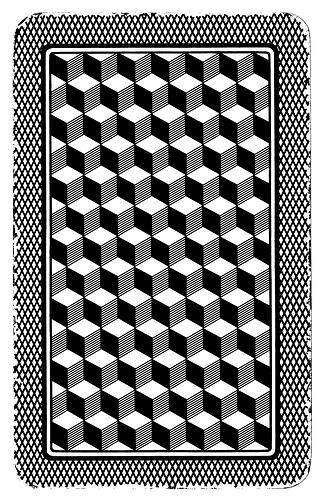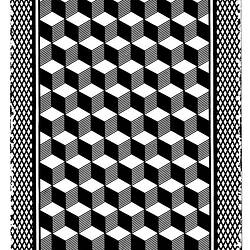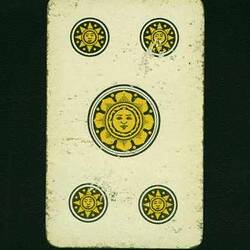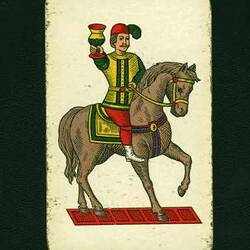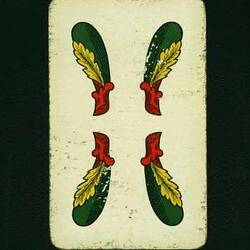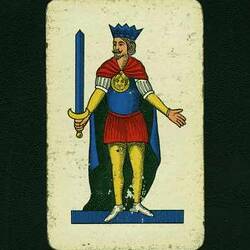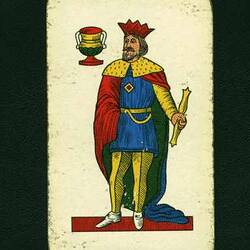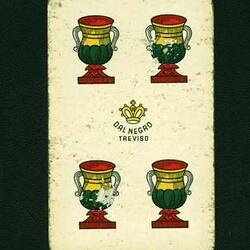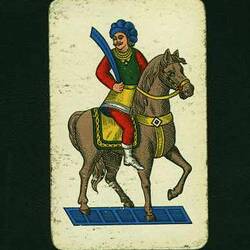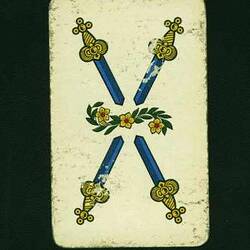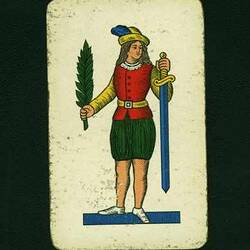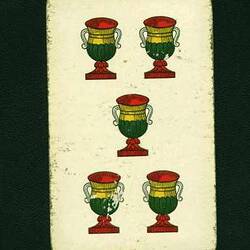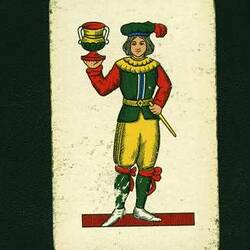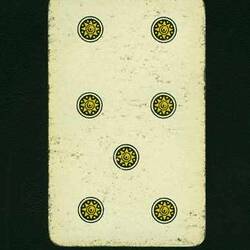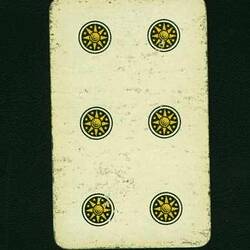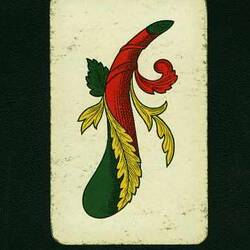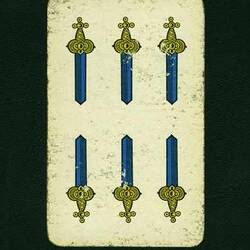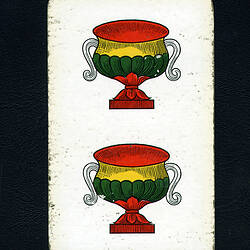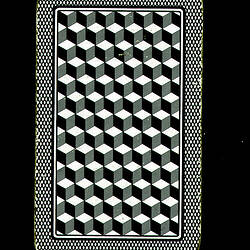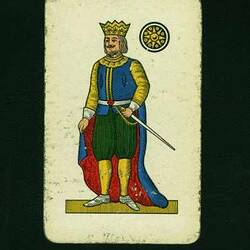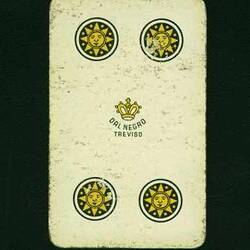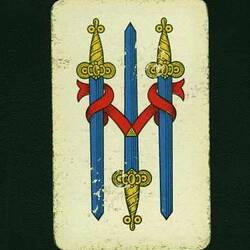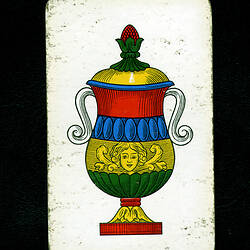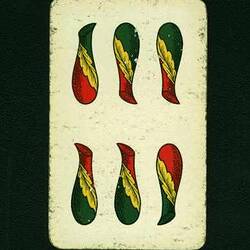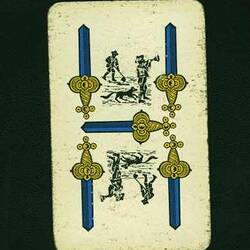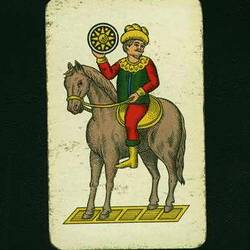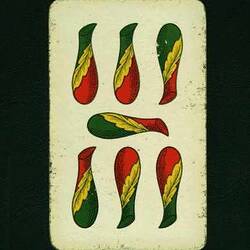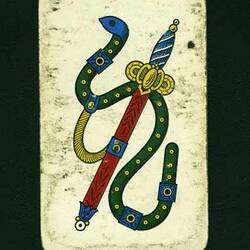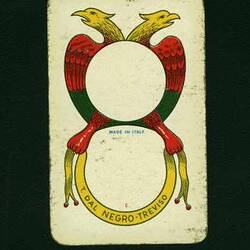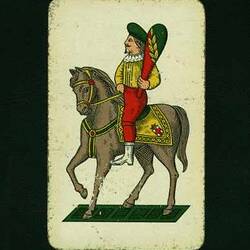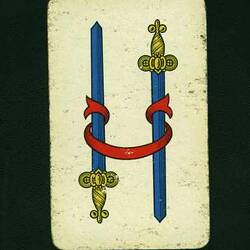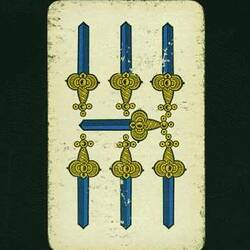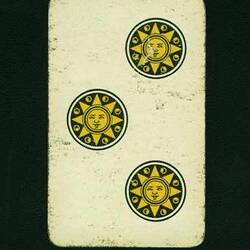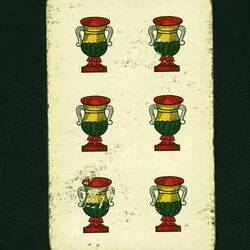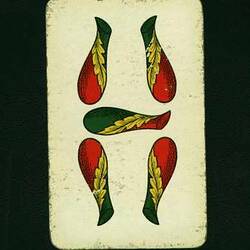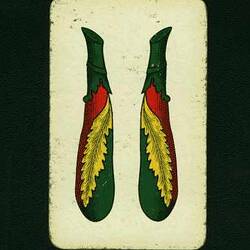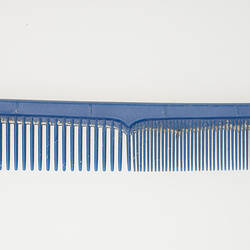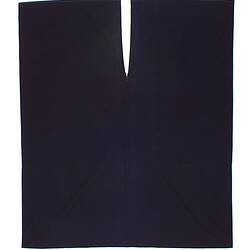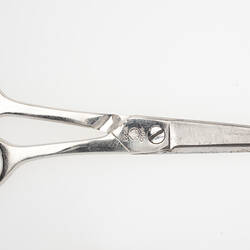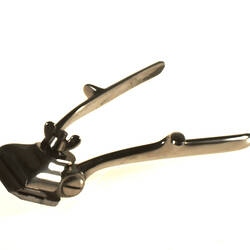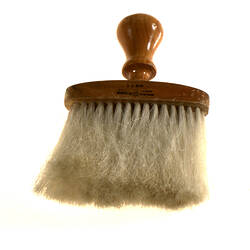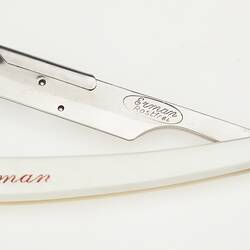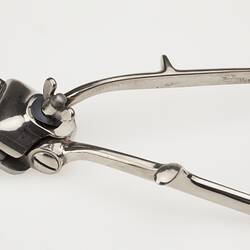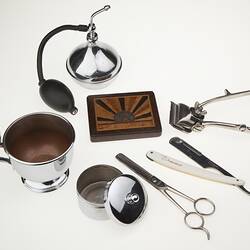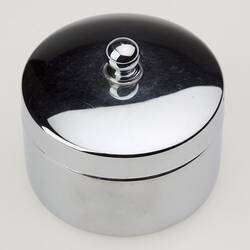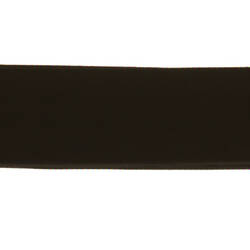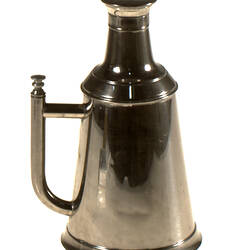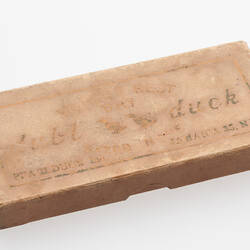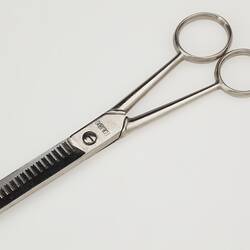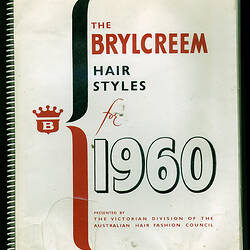Summary
Set of 40 'Napoletane' Italian playing cards, amongst the merchandise sold by Ernesto Angerame after 1949 in his barber shop at 330 Lygon Street, Carlton.
Ernesto Angerame was born in 1920 in Viggiano, in the region of Basilicata, Italy. He migrated reluctantly to Melbourne in 1937, having replaced his brother who had changed his mind. He learned the barber trade during his sea voyage and completed his apprenticeship upon arrival. In 1942, Ernesto was conscripted as an enemy alien into the Civilian Army Corps and released in 1945. In 1949 he opened his own barber's shop in Lygon Street Carlton (known as the Sportsmen's Saloon from the early 1950s) which he ran until he retired in 1984. He cut the hair of numerous local and visiting sportsmen, and was official barber to the Carlton Football Club. His shop also sold tobacconist and hair care products and traditional Italian playing cards.
There are variations on regional Italian playing cards and no one national style, but most tend to include 40 cards of four suits of traditional patterns, as found in classic tarots (Coins, Cups, Swords and Batons). All, those from the north and central-southern regions of Italy, feature a knave, a cavalier or horseman (which is locally known as 'horse'), and a king. This collection appears to be a mix of central and southern suit signs, which have Spanish influences; the Napoletane style being one of the most popular.
Physical Description
Set of 40 'Napoletane' playing cards, with reverse of cards featuring black and white geometric design and cross-hatched border. Principal sides feature various multi-coloured images in red, green, blue, yellow and black, including kings, figures on horses, courtly figures, circular sun motifs, vases, decorative weaponry. One of the central cards includes the words 'T. Dal Negro-Treviso' and 'Made in Italy.'
Significance
The Angerame Italian Barber collection offers valuable insights into the working life of an Italian migrant small business owner from the 1950s in Carlton - a traditional heart of Italian culture in Melbourne. The collection enables the exploration of particularly gendered practices of grooming and the associated male socialising and cultural exchanges, as well as the migrant processes of working and settling into a particular cultural, as well as in this case, the broader community.
More Information
-
Collection Names
Museums Victoria/Italian Historical Society Co.As.It Collection
-
Collecting Areas
Migration & Cultural Diversity, Working Life & Trades, Leisure
-
Acquisition Information
Donation from Mr Ernesto Angerame, 15 Aug 1994
-
Past Owner or User
Mr Ernesto Angerame, Lygon Street, Carlton, Greater Melbourne, Victoria, Australia, 1950-1980
-
Inscriptions
Text, on one card: MADE IN ITALY/T. DAL NEGRO-TREVISO.
-
Classification
-
Category
-
Discipline
-
Type of item
-
Overall Dimensions
51 mm (Width), 82 mm (Height)
Dimensions of each card.
-
References
See exhibition file for details. http://a_pollett.tripod.com/cards5.htm
-
Keywords
Hairdressing, Hairdressing Industry, Italian Communities, Italian Immigration, Playing Cards, Trades
